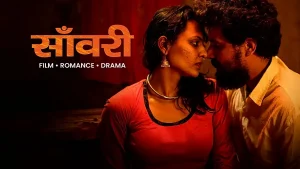
In the crowded landscape of action films, it takes something special to stand out. Kill (2024), directed by the visionary filmmaker Max Carter, is one such standout. This latest entry in the genre doesn’t just offer adrenaline-pumping sequences; it redefines what an action movie can be.
A Plot That Packs a Punch
At its core, Kill tells the story of Aaron Drake (played by the magnetic Liam Harrison), a former special forces operative who finds himself drawn back into the world of high-octane danger after a personal tragedy. The film kicks off with a heart-stopping sequence that sets the stage for a riveting tale of revenge and redemption. Drake’s quest for justice is not just a simple pursuit of vengeance; it’s a journey into the complexities of morality and the costs of violence.
The narrative is structured with a sophistication rarely seen in the genre. Carter’s screenplay delves deep into themes of guilt, loss, and the search for meaning in a world that seems to offer little solace. It’s a story that feels both intimate and grand in scale, a rare feat that makes the film resonate on multiple levels.
Characters with Depth
One of the standout features of Kill is its rich character development. Liam Harrison delivers a powerful performance as Aaron Drake, bringing a nuanced portrayal of a man at war with himself as much as with his enemies. His performance is complemented by a stellar supporting cast, including Eva Martinez (played by the charismatic Sofia Reyes), a skilled hacker with her own personal stakes in the conflict.
The antagonist, played by veteran actor Michael O’Connor, is refreshingly complex. Unlike many one-dimensional villains, O’Connor’s character is driven by motives that are as compelling as they are terrifying. This depth adds layers to the conflict, making the stakes feel even higher.
Groundbreaking Action Sequences
Of course, an action film’s success is often measured by its action sequences, and Kill does not disappoint. Carter’s direction ensures that each scene is not just visually stunning but also narratively significant. The choreography is masterful, blending traditional hand-to-hand combat with innovative techniques that push the boundaries of the genre.
The use of practical effects over CGI lends a visceral authenticity to the action scenes, making them feel raw and immediate. From intense shootouts to intricate hand-to-hand combat, each sequence is designed to keep viewers on the edge of their seats. The film’s cinematography, with its sweeping camera movements and striking visual compositions, further enhances the sense of urgency and excitement.
Thematic Depth and Social Commentary
What truly sets Kill apart is its willingness to engage with deeper themes. The film explores the psychological impact of violence and the moral ambiguities faced by those who partake in it. It poses challenging questions about justice and retribution, inviting viewers to reflect on the nature of heroism and the consequences of one’s actions.
Carter’s direction ensures that these themes are not merely surface-level but are woven seamlessly into the narrative. The film does not shy away from the darker aspects of its subject matter, offering a thought-provoking commentary on the personal and societal ramifications of violence.
Final Thoughts
Kill (2024) is more than just another entry in the action genre; it’s a groundbreaking film that pushes the boundaries of what action cinema can achieve. With its compelling characters, innovative action sequences, and thoughtful exploration of complex themes, it stands as a testament to the genre’s potential for both excitement and introspection.
For those who love action films that offer more than just spectacle, Kill is a must-watch. It’s a film that not only entertains but also challenges, making it a standout in a genre often criticized for its lack of depth. Max Carter has crafted a cinematic experience that is as intellectually engaging as it is visually spectacular, and in doing so, has set a new standard for action films.




